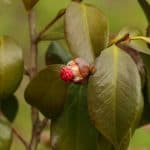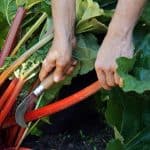Last updated on March 23rd, 2022
Our site is reader supported, this means we may earn a small commission from Amazon and other affiliates when you buy through links on our site.
Camellias are flowering evergreen shrubs that produce large, eye-catching flowers at the end of winter or the beginning of spring. Even though they are a little finicky about their growing conditions you can grow Camellias in good-sized pots and containers. In fact, if you really want to provide the most suitable growing conditions, it’s much easier to control it in a container than it is in the ground because you don’t have the soil pH to worry about in the same way. This article will explain everything you need to know to successfully plant and grow Camellias in a pot.
Growing Camellias in Containers
Choosing the right compost – John Innes Ericaceous compost is ideal
Camellias need acidic soil, preferably soil that has a pH balance between 4.5 and 6.5. You can find special compost that is designed for acidic loving plants such as Azaleas, Rhododendrons and of course Camellia. It is known as ericaceous compost and is what we would highly recommend you use.
Ideally, you want to choose a soil-based ericaceous compost and this means choosing a John Innes ericaceous compost. This will help stop the compost from drying out and being heavier, it can help keep the pot upright.
You can, of course, mix your own by adding coarse sand with coarse peat moss or small pine bark in equal parts. You want to make sure that whatever container or pot you pick has several good drainage holes to avoid waterlogging because Camellias don’t like to have wet feet. In waterlogged soil, Camellias will fall victim to root rot and die if they have soggy soil.
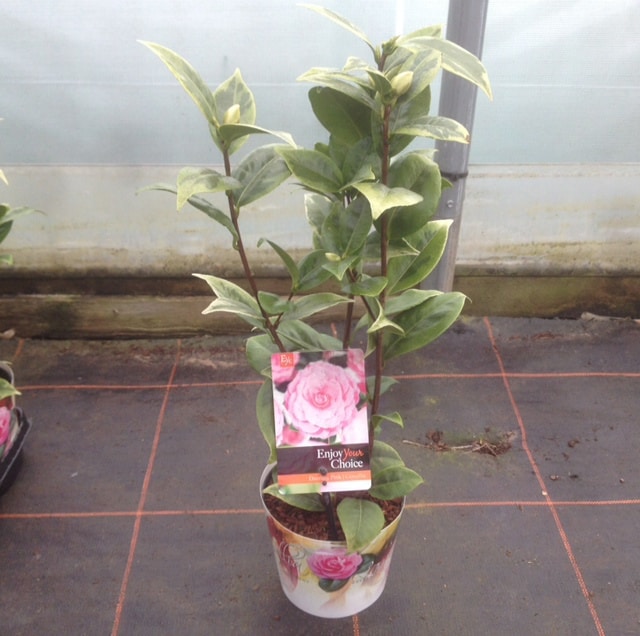
Pick a container with plenty of drainage holes and add crockery to the bottom to improve drainage
When picking the container, the material doesn’t matter as much as the aforementioned drainage holes. If there aren’t enough during holes you can easily drill more, especially with a plastic container. Choose a size with plenty of room to pot the plant up and have plenty of fresh compost around it, just be careful not to go too large as this can also cause root rot.
Camellia Care
Position Camellias in morning sun and afternoon shade or dappled shape all day
You want to put the container in a place that is partially shaded with protection against direct afternoon sunlight. Ideally, it should be positioned so it receives morning sun and afternoon shade. The other recommended alternative is partial shade all day. Too much shade though can cause poor flowering.
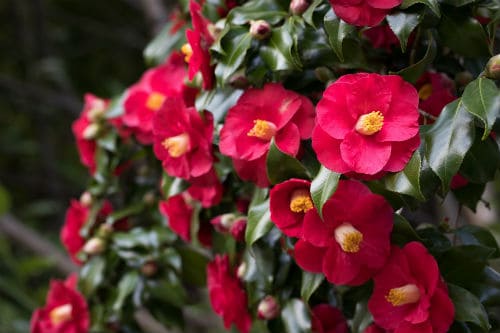
Keep the soil moist but not overly wet
On that note, any container-grown plants will dry out substantially faster than plants grown in the ground. So you should check the potting mixture regularly to see if it needs to be watered. During the warm, dry weather, you might have to check one or two times per day. Camellias should be watered deeply whenever you notice that the top 5-10cm of potting mix has dried out. You never want the plant to sit in wet conditions but ideally, the soil should be moist.
Feeding container grown Camellias – apply slow-release fertiliser in spring after flowering
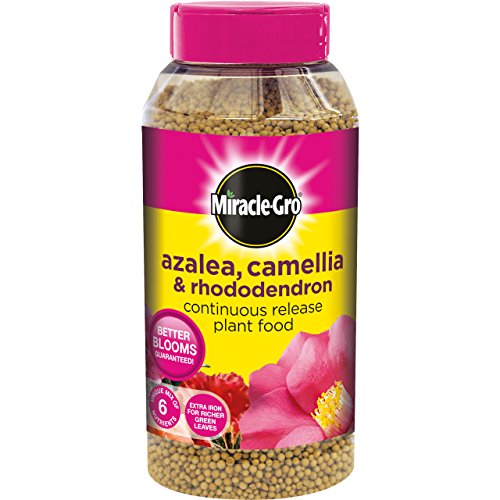 Slow-release fertiliser to feed Camellias in spring after flowering
Slow-release fertiliser to feed Camellias in spring after flowering
In terms of food, you can add fertiliser to your container-grown plants after they have bloomed, at the end of spring. We recommend applying fertiliser for acid-loving plants such as Miracle-Gro Azalea, Camellia and Rhododendron Continuous Release Plant Food. Always water your plant before you add the slow-release fertiliser or it can burn the roots.
Feed Camellias over the summer with a liquid feed
If the growth seems a little slow in the summer you can add some ericaceous liquid feed such as Miracle-Gro Azalea, Camellia and Rhododendron Liquid Plant Food.
While this is not typically a problem in English gardens, if the temperatures are above 32°C, don’t feed them. Wait until the temperature has dropped.
 Feed over summer every 2 weeks with a liquid feed such as Miracle-Gro Liquid Plant Food
Feed over summer every 2 weeks with a liquid feed such as Miracle-Gro Liquid Plant Food
You can read our detailed guide on how and when to feed Camellias by clicking here
Pruning container-grown Camellias
Camellias don’t really require pruning with the exception of controlling the size and removing any diseased and damaged growth. If you do need to prune this should be done immediately after flowering. Deadhead flowers as they finish to keep the plant from producing seeds and keep it looking nice. If you prune too late in the season you might accidentally remove buds that are forming for the next season, which is why pruning should be done straight away after flowering.
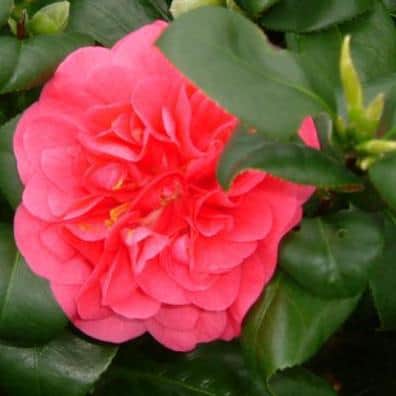
You can learn more about pruning Camellias in this guide here
Repotting Camellias
Every 3-4 years you might have to re-pot your Camellia into a bigger container. When that time comes, get a container that is at least one size larger than what you have currently. Always add fresh ericaceous potting soil, as older soil is depleted of the nutrients your Camellia is dependent on.
Problems
Camellias are generally problem-free but one common problem is with the buds falling off or plants not flowering at all. Most issues are related to the growing environment. Sometimes the area is too shady so place them in the morning sun and afternoon shade or dappled shade all day. Keep the soil moist, especially over summer when the buds are forming and even through the winter. Remember plants in pots dry out much more quickly.
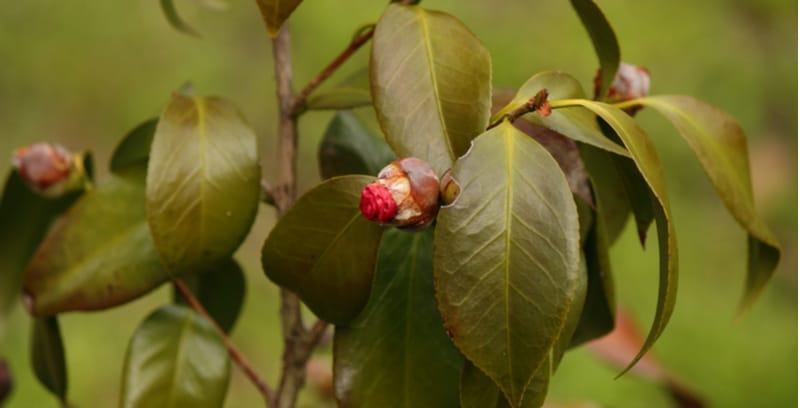
Now you know all about growing Camellias in pots and you can enjoy their stunning flowers. You can do so no matter your gardening limitations.

